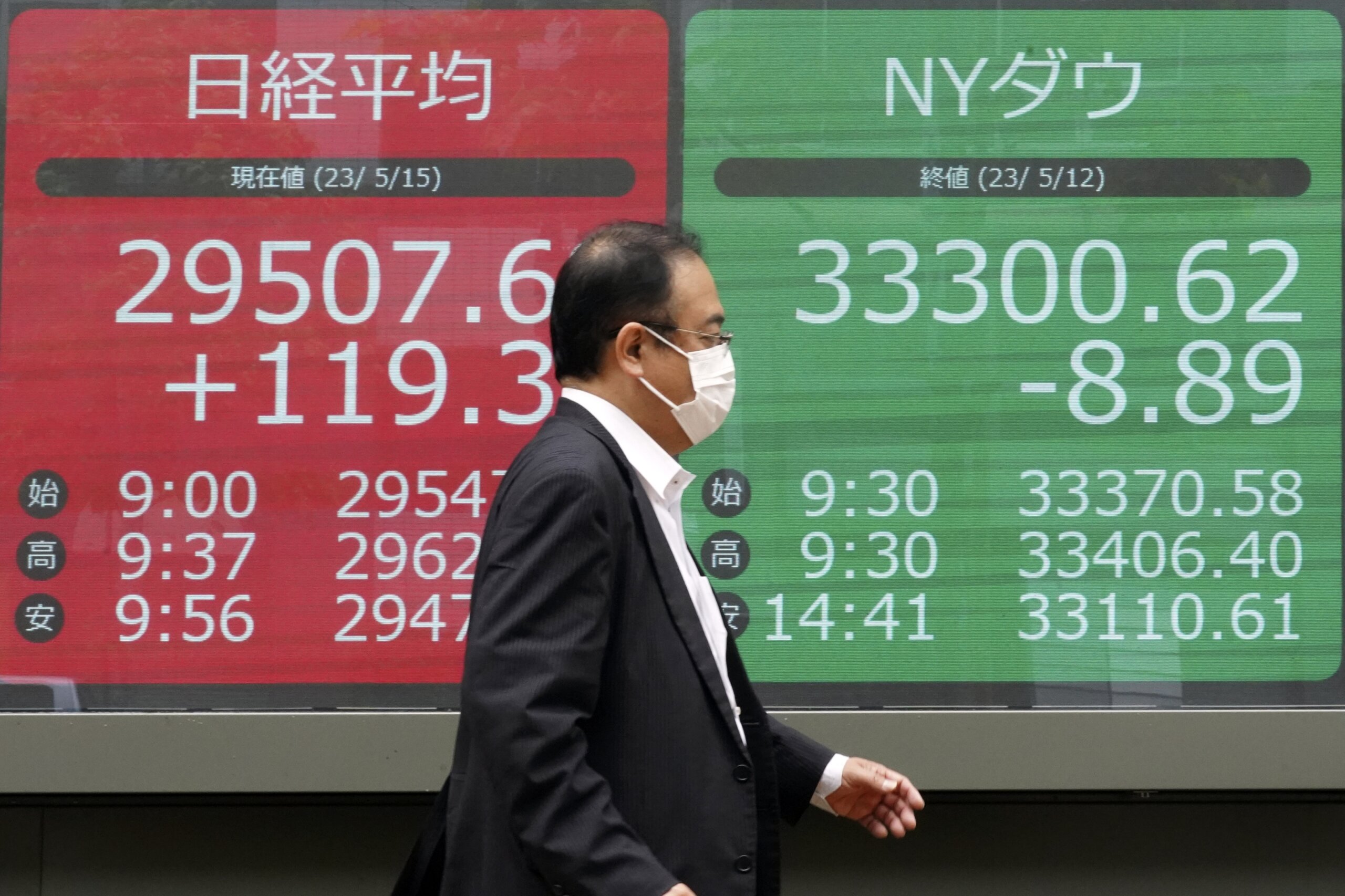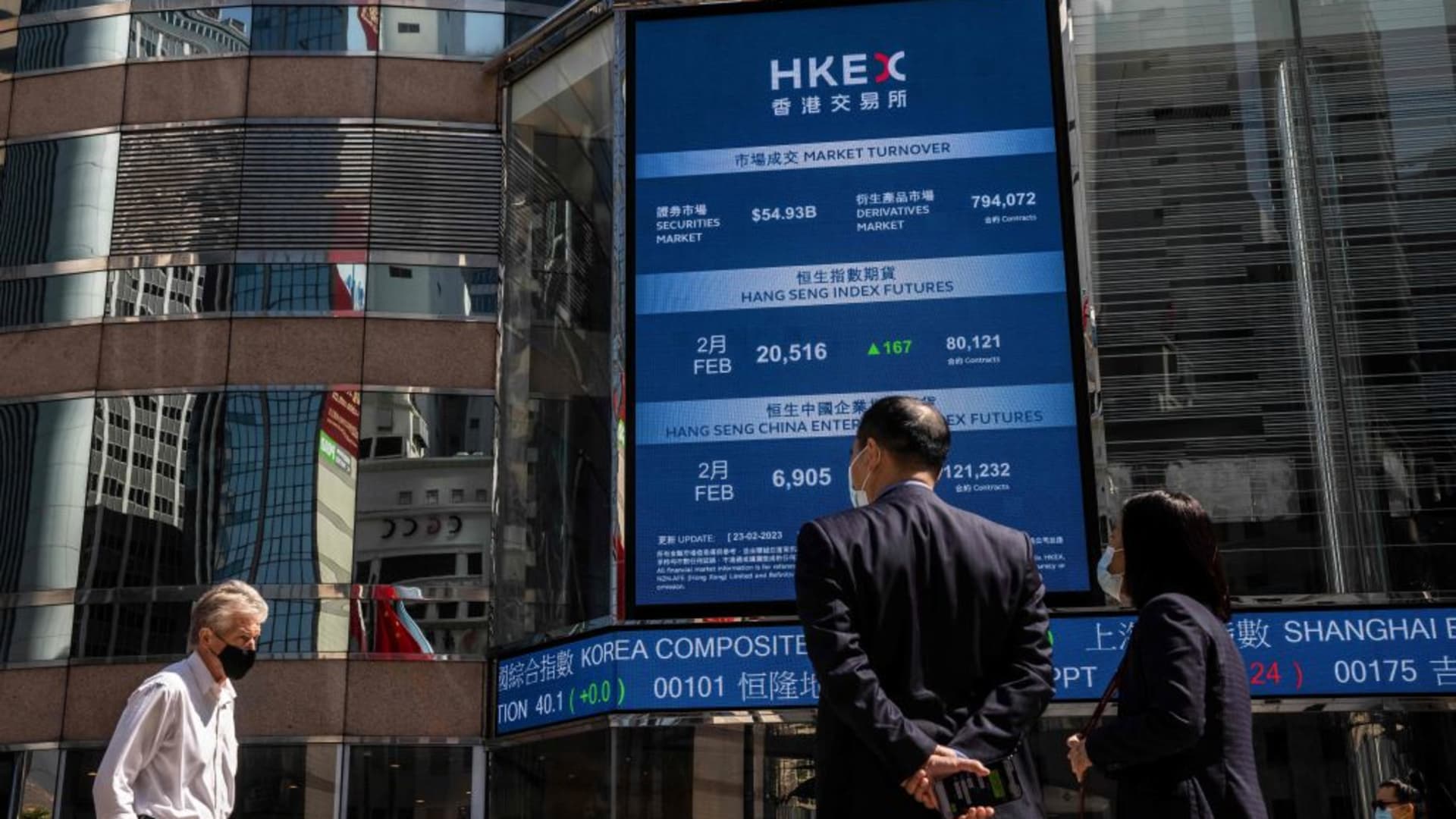China’s Disappointing Data Raises Concerns
China's economic recovery has hit a snag as consumer spending and industrial activity experienced slower growth than expected in April.

China’s economic recovery has hit a snag as consumer spending and industrial activity experienced slower growth than expected in April.
Despite an initial boost in consumer and corporate activity earlier in the year, the country’s second-largest economy is now showing signs of faltering. This has led to calls for additional government stimulus to bolster development efforts. Official data reveals that industrial output, retail sales, and fixed investment in April fell significantly short of projections.
Although the figures were somewhat inflated due to the comparison with last year’s lockdown period in Shanghai, they still proved disappointing. Zhou Hao, an expert at Guotai Junan, suggests that these statistics indicate a need for strong policy support to unlock China’s growth potential, as the current momentum appears to be steady rather than accelerating.

According to the latest report from the National Bureau of Statistics, industrial production experienced modest growth of 5.6% compared to the previous year. This figure fell significantly short of the 10.9% median expectation based on a survey conducted by Bloomberg. On the other hand, retail sales showed a more positive trend, with an increase of 18.4%. This growth was mainly attributed to a low base of comparison from the previous year. As expected, the projected 3.5% expansion in retail sales was successfully achieved.
Although the majority of retail sectors observed an upswing in sales, there was a notable decrease in the purchase of high-value items like automobiles and household appliances. During the initial two months of this year, when compared to the corresponding period in the previous year, online sales of physical goods experienced a notable growth of 5.3%. However, the growth in fixed-asset investment during the first four months of the year was disappointing, reaching only 4.7% and falling short of expectations.
The urban unemployment rate decreased to 5.2%, but the rate among young people rose to a record high of 20.4%. Real estate investment experienced a decline of 5.7% in January and February compared to the same period last year, following a 10% decrease in investment for the entire previous year. Moreover, the growth rate of investment in industry and infrastructure in the first two months of 2019 was slower compared to the corresponding period in 2022.

The data presented a gloomy picture, suggesting that policymakers may need to enhance their efforts to foster economic growth. Wu Xuan, the chief market analyst at Tebon Fund Management, expressed his belief that China’s recovery this year might be weaker than previously anticipated.
To stimulate growth, he suggested that the People’s Bank of China (PBOC) could potentially decrease interest rates in the latter part of the year. Bruce Pang, the chief economist and director of research for Greater China at JLL, remarked that today’s data showed few positive signs. Although February’s retail sales figures were not significantly different from January’s, Pang found it unexpected, considering the recent acceleration in investment growth.
However, he anticipated a revival in the real estate market later in the year, as March typically represents the peak period for home supply. On Monday, the People’s Bank of China indicated its commitment to a supportive stance by ensuring “appropriate” levels of lending and money supply. It also increased long-term liquidity provided to the banking sector, while maintaining the same interest rate for its one-year policy loans.

Michelle Lam, an economist specializing in the Greater China region at Societe Generale SA, has raised apprehensions regarding the sustainability of the economic rebound, despite a consistent level of consumer spending. Lam’s concerns stem from the disturbing rise in unemployment among young individuals, which poses a significant threat to the overall recovery.
Lam suggests that the current data set the stage for potential interest rate cuts and reductions in reserve requirements, likely to occur in June. However, she emphasizes the need to bolster confidence within the private sector and households. The National Bureau of Statistics (NBS) highlights both local and global risks, emphasizing that domestic demand remains insufficient while the global economic environment remains complex and unfavourable. The NBS report further states that the internal impetus for an economic rebound remains weak.

The persistently high unemployment rate among young individuals has emerged as a significant cause for alarm, signalling that the post-pandemic economy lacks the necessary strength to accommodate the substantial influx of new entrants to the workforce. The latest data from the statistical agency reveals a marginal increase of 0.1 percentage points in urban unemployment, reaching 5.6% in February compared to January.
Of particular concern is the notable unemployment rate of 18.1% among young adults aged 16 to 24, which remains considerably elevated. Fu Linghui, the spokesperson for the statistics bureau and the director of its Department of Comprehensive Statistics of the National Economy, highlighted the substantial impact of the pandemic on China’s economic growth, averaging 4.5% over the past three years, consequently exerting significant pressure on employment opportunities.
BigOne Lab, a Beijing-headquartered alternative data company supported by investors such as S&P Global, has reported a significant drop of 23% in the overall count of employment opportunities listed on notable Chinese recruitment platforms during the initial two months of this year, in comparison to the corresponding period in 2022.

Recent data indicate a concerning slowdown in the economic recovery, as supported by various statistics. Despite initial signs of an uptick in home sales, the real estate sector continues to face difficulties. Additionally, inflation remains low, leading to consumer hesitancy in taking on loans.
The latest figures underscore the persistently weak state of the housing market, further burdening the economy. Bloomberg’s analysis of government data reveals a 16.2% decline in real estate investment in April, despite a 13.2% year-on-year increase in property sales. The construction of new residential properties has also experienced a decline over time. These numbers align with other statistical trends, indicating that the robust beginning of the year has given way to a slower economic recovery.
Consumers have scaled back their mortgage borrowing, and real estate sales during the Labour Day weekend remained below pre-pandemic levels. In April, there was minimal growth in consumer prices, while imports experienced a significant decline, signalling sluggish domestic spending. Both consumer and business borrowing witnessed a decline last month.

According to an official statement from China’s National Bureau of Statistics, the current global situation has become increasingly intricate, with persistent issues of insufficient demand and an unstable foundation for economic recovery. The bureau has recommended bolstering consumer confidence and achieving a “reasonable growth rate.” The Chinese government recently set a growth target of approximately 5%, which the newly appointed premier, Li Qiang, acknowledged would be a challenging task.
When asked about the GDP goal, Fu, an official, mentioned that if growth were too sluggish, it could expose underlying problems within China’s economy and escalate the risks. Fu used the term “high-quality development,” a phrase employed by Beijing to signify a shift away from solely pursuing rapid expansion, to describe the transition towards avoiding excessively ambitious targets.
Proofread & Published By Naveenika Chauhan




